Shipra Sharma
Extracting Conceptual Knowledge from Natural Language Text Using Maximum Likelihood Principle
Sep 19, 2019
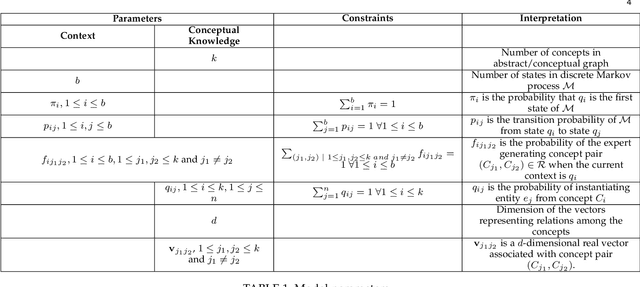
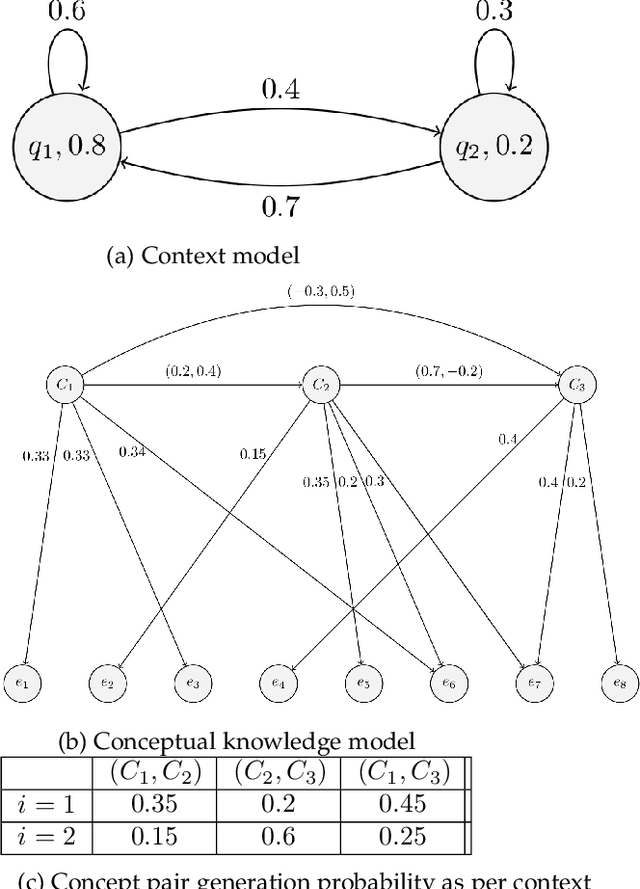

Abstract:Domain-specific knowledge graphs constructed from natural language text are ubiquitous in today's world. In many such scenarios the base text, from which the knowledge graph is constructed, concerns itself with practical, on-hand, actual or ground-reality information about the domain. Product documentation in software engineering domain are one example of such base texts. Other examples include blogs and texts related to digital artifacts, reports on emerging markets and business models, patient medical records, etc. Though the above sources contain a wealth of knowledge about their respective domains, the conceptual knowledge on which they are based is often missing or unclear. Access to this conceptual knowledge can enormously increase the utility of available data and assist in several tasks such as knowledge graph completion, grounding, querying, etc. Our contributions in this paper are twofold. First, we propose a novel Markovian stochastic model for document generation from conceptual knowledge. The uniqueness of our approach lies in the fact that the conceptual knowledge in the writer's mind forms a component of the parameter set of our stochastic model. Secondly, we solve the inverse problem of learning the best conceptual knowledge from a given document, by finding model parameters which maximize the likelihood of generating the specific document over all possible parameter values. This likelihood maximization is done using an application of Baum-Welch algorithm, which is a known special case of Expectation-Maximization (EM) algorithm. We run our conceptualization algorithm on several well-known natural language sources and obtain very encouraging results. The results of our extensive experiments concur with the hypothesis that the information contained in these sources has a well-defined and rigorous underlying conceptual structure, which can be discovered using our method.
APR: Architectural Pattern Recommender
Mar 23, 2018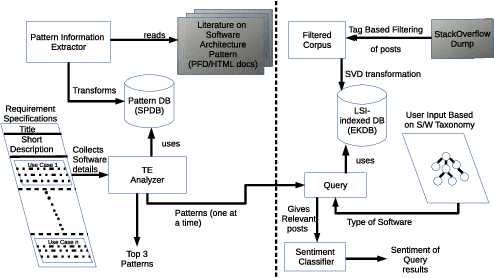
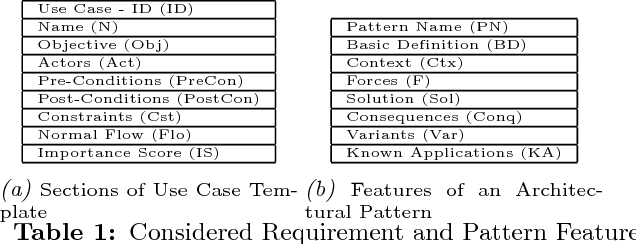
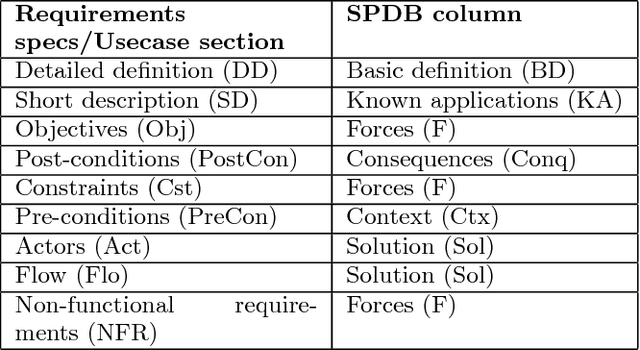
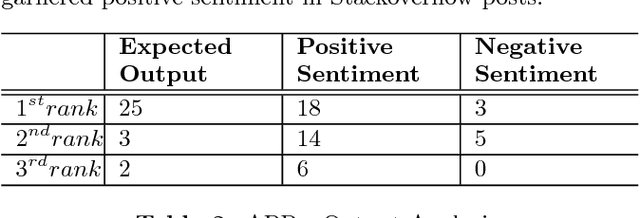
Abstract:This paper proposes Architectural Pattern Recommender (APR) system which helps in such architecture selection process. Main contribution of this work is in replacing the manual effort required to identify and analyse relevant architectural patterns in context of a particular set of software requirements. Key input to APR is a set of architecturally significant use cases concerning the application being developed. Central idea of APR's design is two folds: a) transform the unstructured information about software architecture design into a structured form which is suitable for recognizing textual entailment between a requirement scenario and a potential architectural pattern. b) leverage the rich experiential knowledge embedded in discussions on professional developer support forums such as Stackoverflow to check the sentiment about a design decision. APR makes use of both the above elements to identify a suitable architectural pattern and assess its suitability for a given set of requirements. Efficacy of APR has been evaluated by comparing its recommendations for "ground truth" scenarios (comprising of applications whose architecture is well known).
* 6 Pages, 1 Figure. Published in SAC 2017 in Software Engineering Track
 Add to Chrome
Add to Chrome Add to Firefox
Add to Firefox Add to Edge
Add to Edge